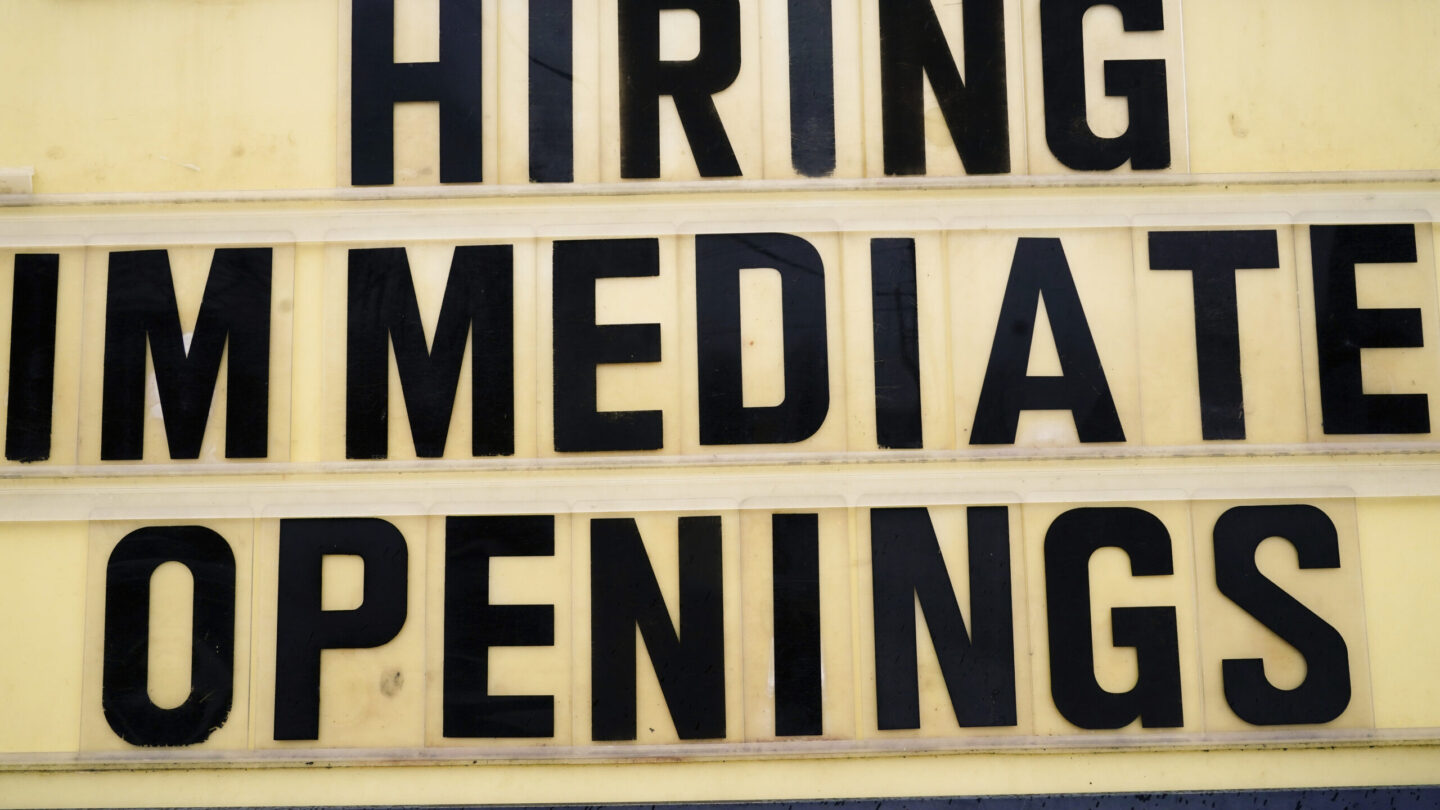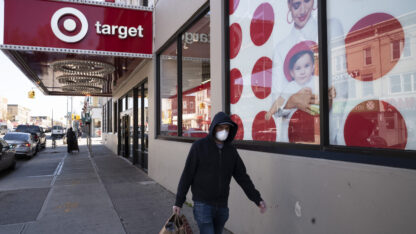The U.S. added 678,000 jobs in February. It's another sign of a hot labor market

Matt Rourke / Matt Rourke
U.S. employers added 678,000 jobs last month as a resilient economy continues its recovery from the stubborn coronavirus pandemic.
February’s job gains are an improvement from the month before, when revised figures show employers added 481,000 jobs. Job gains for December were also revised upward.
The unemployment rate fell to 3.8% last month, from 4% in January.
Job gains in February were widespread, with bars and restaurants adding 124,000 jobs, construction companies adding 60,000, and factories adding 36,000.
The health outlook has improved significantly since a winter wave of infections tied to the omicron variant. But the strength of hiring this spring will depend in large part on the availability of workers.
And Russia’s invasion of Ukraine adds another wild card to the economic forecast.
“Omicron, which is now fading across most of the country, did not have as much of an economic impact as was expected,” said Nela Richardson, chief economist for the payroll processing company ADP. “But it may have had an effect of keeping some workers on the sidelines, due to health concerns.”
The economy is still missing workers
The number of people working or looking for work has increased in recent months, but is still below pre-pandemic levels. The workforce grew by 304,000 people in February.
“I think as people start to feel a little more comfortable about coming back to the offices, as people feel they don’t have to be staying at home with the children any more, I think you will start to see that number continuing to move higher,” said Jay Bryson, chief economist at Wells Fargo. “But that said, there’s a number of people who’ve retired now who probably aren’t coming back.”
The pandemic shock sidelined a larger share of workers in the U.S. than in other countries.
Employers are boosting pay
Many employers have increased pay in order to attract scarce workers. Smaller companies in particular have struggled to find enough help.
“Small companies typically have smaller profit margins and cash reserves, making them less well-equipped to compete on wages and benefits for a limited pool of qualified workers,” Richardson said.
For the last two years, the Federal Reserve has kept interest rates near zero, in an effort to prop up the pandemic-scarred economy and encourage hiring.
But now the Fed is preparing to shift gears — focusing less on employment and more on inflation, which has soared its highest level in nearly 40 years.
“Unemployment is low. Wages are going up. The labor market is quite healthy. And inflation is all too high,” Fed chairman Jerome Powell told the Senate Banking Committee Thursday. “We’re accountable for inflation and we’re going to use our tools to bring it down.”
Fed gears up to raise interest rates
Powell said he expects the Fed to start raising interest rates — most likely by a quarter percentage point — when policy makers meet in less than two weeks. The goal is to tamp down demand, which has been outstripping supply leading to higher prices.
But Russia’s invasion of Ukraine adds new a new wrinkle to the Fed’s challenge. The conflict has sharply increased prices for energy and wheat. But it also threatens to slow economic growth.
“On the one hand, you have an inflation rate that’s significantly higher than what the Fed would like to see,” said Bryson. “But on the other hand, you have all these uncertainties as it relates to what’s going on in Russia and Ukraine right now. So they’re not on auto-pilot. They’ll be paying very, very close attention to what’s going on.”
9(MDAxODM0MDY4MDEyMTY4NDA3MzI3YjkzMw004))








